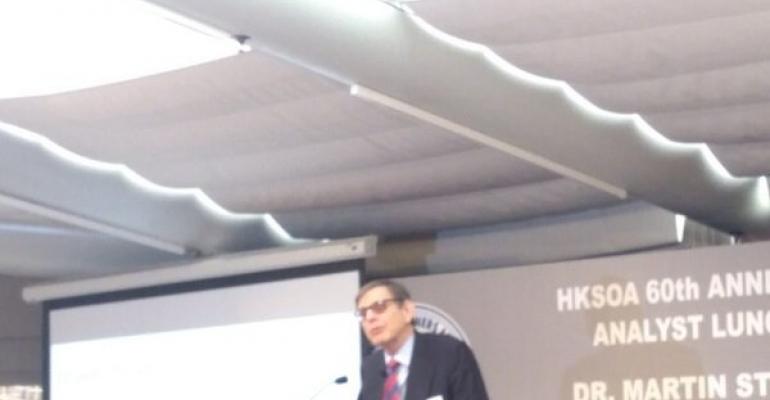Speaking at the first Hong Kong Shipowners Association lunch in its 60th anniversary year Stopford said: “The business model we’ve known for the past 50 years is looking a bit shakey.”
Elaborating, he said that several factors are behind this imperative. With commoditisation driving rates lower and smaller onshore teams, there is a need to look for ever higher efficiency gains. The way to achieve this Stopford said, is to change the way the industry thinks about the use of data and the deployment of personnel.
Stopford suggested that to do this, a fleet of ships should be run like a transport factory. This inherently involves the use of technology but not necessarily in the move towards more autonomous vessels as has been suggested recently. Eschewing the image of “Ronnie the robot” type ships’ bridges, Stopford said a better use for technology would be to empower the human element on ships by giving the masters more autonomy and motivating them to be more involved in management level decision making.
He highlighted the example of team and technical managers of the top F1 racing teams and how they made critical trackside decisions that were pivotal to race performance and suggested that with the onboard information that crews now have available, they might be challenged to reach a similar level of efficiency.
Stopford added that with ships now built mostly digital-ready and with all the requisite technology to process key information, the next step is to ensure that this is standardised and enable systems that are not too people-dependent and where personnel can be moved around the business easily.
This would ultimately facilitate a move towards a more horizontal personnel system for shipping, which he believed is what the industry needs.
“Digitalisation is not the goal, nor is autonomous shipping; these are tools and ways you might develop it. The goal is maritime transport systems that meet the needs of the next generation,” Stopford concluded.
Copyright © 2024. All rights reserved. Seatrade, a trading name of Informa Markets (UK) Limited. Add Seatrade Maritime News to your Google News feed.


